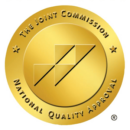Perhaps you’ve never heard of polydrug use and the effects of this problem. We will be discussing polydrug use dangers because a vast amount of people who struggle with addiction also partake in polydrug use. We will dive deeper into the nature of polydrug use dangers, which substances are commonly experienced together, and the effects on the brain that polydrug use has.
If you or a loved one are struggling with addiction, we at the Discovery Institute want to help you on the road to recovery. We know that addiction can seem daunting and impossible to conquer. However it is a very treatable disease, the first step is to reach out.
What Is PolyDrug Use?
Polydrug use is the act of partaking in two different addictive substances at once. Usually, people do this to enhance the “high” that occurs with the use of certain substances. Polydrug use is a serious problem and can even be deadly.
To name a few, polydrug use can drastically increase the dangers of serious withdrawal effects, overdose, and death. Alongside this, polydrug use can also increase the likelihood of a co-occurring disorder. Finally, polydrug use can not only increase the likelihood of a dual diagnosis, but it can also produce mental illness even if the individual did not experience it before. Let’s take a look at why polydrug use dangers can cause these things, and which drugs are commonly used together.
Why Do People Participate in Polydrug Use?
When individuals risk polydrug use dangers, they do so to experience an advanced high. When someone takes two drugs at the same time, they are not only simultaneously experienced, but each individual drug high is increased. This produces a stronger and more intense euphoria.
The problem is that this also increases the normal dangers of drug use. One of the biggest problems with the highs people experience from using drugs is that the brain cannot produce those same chemicals at that level. That leads the body to “crash”.
This is called withdrawal, and if you struggle with addiction, you know withdrawal all too well. The problem with polydrug use is that it depletes the brain’s levels of “feel-good” chemicals far more rapidly than normal. This leads to an increased high and a more devastating crash. For example, taking alcohol and painkillers together increases the high; but it also increases the chance that the person will stop breathing.
The unfortunate reality is that polydrug use is extremely common. In fact, many do not know they are polydrug users. Plenty of teens use marijuana and alcohol, or ecstasy and alcohol. They do not even realize the severity and deadliness of their actions. At the Discovery Institute, we want you to know what you’re up against if you’re using multiple substances regularly.
How Many Addicts Are Also Polydrug Users?
If you think polydrug use is uncommon, you are sorely mistaken. In 2011, roughly 56% of all emergency room visits were due to polydrug use. That is over half of all visits to the ER. Additionally, in 2007, over 3 million Americans mixed and abused drugs. In 2009 this number increased to 4.5 million visits to the ER due to polydrug use. These ER visits are broken down as follows:
- Cocaine – 422,901
- Marijuana – 376,486
- Heroin – 213,118
- Opiate pain relievers – 342,983
- Benzodiazepines (Xanax, Valium) – 312,931
- Muscle relaxants (Soma, Flexeril) – 50,878
- Stimulants (Ritalin, Adderall) – 21,799
Another important topic to discuss is the prevalence of polydrug use amongst American teenagers. Studies have shown that 7 out of 10 teenage drug users combined prescription medication with alcohol. This is having devastating effects on our younger generation. It can have detrimental effects on their futures, upbringing, and brain development. Now that we have discussed how many people participate in polydrug use, let’s examine the specific dangers.
Polydrug Abuse and Its Effects on the Brain
Drugs normally affect the brains of those who use them. However, when a person risks polydrug use dangers, the substances have deteriorating effects on their cognitive functioning. For instance, one example is the way our brains store our memories. Addiction literally rewires the pleasure, motivation, and memory centers of the brain. This takes away the ability to create formative memories after addiction.
While plenty of detrimental effects occur during addiction, they can continue into adulthood. We have all heard stories of people not being able to recall past experiences during, particularly intense addictions. However, it can also hamper our ability to form new memories.
It can also affect the ways our brain helps us sleep. Many times, addicts mix alcohol and sleep enhancement drugs to increase their “medication.” This can lead to sleep-walking injuries, comas, or even death. Alongside this, polydrug use can harm our circadian clock in general, decreasing our ability to fall into the REM cycle. For this reason, even when we get a good night’s rest, we do not feel as though we did. This is because the substances disrupted our sleep rhythm and prevented us from getting the rest we needed.
Increasing the Likelihood of A Co-Occurring Disorder
Not only is polydrug use a danger of producing twin addictions, but another polydrug use danger is also the possibility of causing a co-occurring disorder. This refers to the process by which two disorders are experienced at the same time.
Just like the high experienced by polydrug use dangers, these are not just two simultaneous disorders. The two disorders intertwine and create a more powerful, and more harmful disease. This disease becomes more difficult to treat. Additionally, the two disorders feed into one another, causing the individual to try to cope and relapse.
For example, a co-occurring disorder in this scenario is often addiction and mental illness. Mental illness can manifest itself as depression or anxiety (these are two of the most common). Addiction has a likelihood of causing, being caused by, or contributing to the formation of mental illness. However, polydrug use increases the likelihood of developing anxiety, depression, or another disorder.
This is because the withdrawal effects are far more severe, and far more devastating. They can cause us to feel an even more intense crash after the increased high. This can cause us to develop depression, and in an attempt to cope; isolate us further from loved ones. polydrug use danger like this is extremely severe since these disorders contribute to one another. Consider dual diagnosis treatment, and getting connected to a group that can support you.
Overdose and Death
The worst-case scenario, which is all too common, is that most of the time polydrug use will land users in the ER or lead to death. Drug Awareness Warning Network has done several studies which assert most ER visits are due to drug overdose caused by polydrug use, and many of these instances can lead the individual to die.
Death is all too common in relation to addiction, however, this is especially true in the case of polydrug use. For example, mixing ecstasy and cocaine increases the user’s high. But it also leads them to be far more likely to have a heart attack. Alongside this, the greatest polydrug use danger is “combined drug intoxication.” This has already led to countless ER visits and resulted in many unfortunate deaths. Next, we will move onto examining commonly experienced polydrug usages.
Cocaine and Alcohol
This is one of the most common combinations of substances. It actually leads to the development of an entirely new chemical within the body. This new chemical is called cocaethylene. The polydrug use dangers of cocaethylene are as follows:
When cocaine enters the bloodstream already filled with alcohol, it becomes cocaethylene instead. Cocaethylene has similar effects as cocaine. However, it is 20 times more likely to result in death and it can cause seizures, liver damage, and immune system damage. It also leads to an increase of around 30% of cocaine in the body, thus putting an increase of strain on the cardiovascular system.
Alcohol and Ecstasy
Alcohol and ecstasy are frequently used together, especially in party scenes. While alcohol is sometimes used to moderate the effects of ecstasy (since alcohol is a depressant), one may not feel all the effects of ecstasy, however, they experience a far more devastating crash when coming down. Both alcohol and ecstasy dehydrate you, combine this with sweating and dancing for several hours and you are at risk of heatstroke. It also strains the liver and kidneys, as well as impairing judgment. These are all extremely debilitating polydrug use dangers.
Alcohol and Heroin
Since alcohol and heroin are both central nervous system depressants, the experience of both at the same time increases the high of each. It also draws out different sensations and effects that would not normally be experienced with a single drug. Polydrug use dangers include:
- Respiratory failure
- Brain damage
- Risk of overdose
If one were to overdose on alcohol and heroin, they risk cutting off oxygen to the brain.
Opiates and Cocaine
Polydrug use dangers of these two other central nervous system depressants are prevalent as well. These two drugs are sometimes combined when an individual hasn’t nodded off from the opiate, and cocaine to kick in. Since cocaine is an extremely stressful drug on the heart, taking these two drugs in tandem can put intense strain on the cardiovascular system.
It is not uncommon to see blood vessel ruptures, stroke, heart attack, and cardiac arrest from this combination. Also, since cocaine negates the sleepy effects of the painkillers, the individual may misjudge their prescription (or general measurement) and take way more opiates than they desired. Needless to say, this leads to some intense side effects, withdrawal effects, and possibly overdose.
Cocaine and Ecstasy
Both of these drugs are stimulants. They cause the user to go into overdrive. They also cause the body to be overwhelmed by heat and stress. The unfortunate reality is that many people frequently polydrug these two substances at clubs or parties. A survey of New York clubgoers saw 92% participate in polydrug use, and around 85% used both cocaine and ecstasy. Both of these drugs cause the heart to go into overdrive and lead to a stroke or cardiac arrest. On top of this, the level of sweating and overheating can lead to heatstroke.
Benzodiazepines and Alcohol
As previously stated, alcohol is often combined with sleeping pills and benzodiazepines like Xanax, Valium, Ativan, etc.. However, sometimes individuals will take a sleeping medication and are too impatient for the effects to kick in; thus they turn to alcohol to “boost” the sleeping medications. Another option is that an individual will already have been drinking, and miscalculate their prescription sleep medication due to impaired judgment. The result is polydrug use dangers.
The danger arises because both of these are depressants on the body’s central nervous system. If the individual does not fall asleep, they are heavily dizzy, lack judgment, have impaired memory, and are more aggressive. If they do fall asleep, things can be even worse because people can slip into a coma. Alongside this, while benzodiazepines alone have little risk of overdose; the combination between these two substances can be particularly lethal.
If you are a loved one and are worried about your person struggling with polydrug use, please consider getting them help. We at the Discovery Institute recommend getting them an intervention. If done well, this is a great way to let them know you care about them and encourage treatment.
Contact Us
You are not alone, and it is not too late. Perhaps you are experiencing polydrug abuse which has formed a co-occurring disorder (or dual diagnosis), and you think you are too far gone. No one ever is, and we at the Discovery Institute want to help you get on the road to recovery. Recovery may seem like a long road, but you do not have to do it alone. Please consider reaching out to us today. We have a specialist ready to connect with you about anything you need. Taking back your life can start with a single phone call, call (844) 433-1101 today.
References:
https://druginfo.sl.nsw.gov.au/blogs/what-polydrug-use
https://www.ncbi.nlm.nih.gov/pubmed/7616402
http://www.samhsa.gov/data/2k13/DAWN2k11ED/DAWN2k11ED.htm
http://www.ncbi.nlm.nih.gov/pubmed/9243342
Dr. Joseph Ranieri D.O. earned his BS in Pharmacy at Temple University School of Pharmacy in 1981 and His Doctorate Degree in Osteopathic Medicine at the Philadelphia College of Osteopathic Medicine in 1991. He is Board Certified by the American Board of Family Medicine and a Diplomate of the American Board of Preventive Medicine Addiction Certification. Dr. Ranieri has lectured extensively to physicians, nurses, counselors and laypeople about the Disease of Addiction throughout New Jersey and Pennsylvania since 2012.



